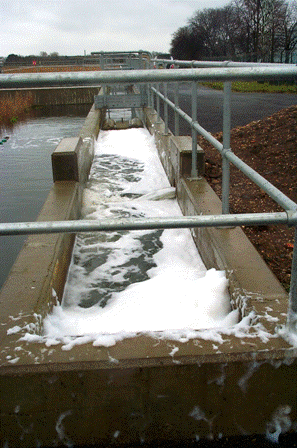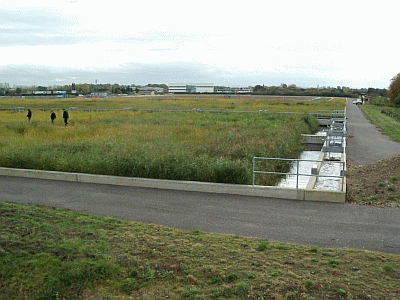Heathrow constructed wetlands
Background
Airports are facing the dual challenge of maintaining public safety and protecting the environment. De-icer and anti-icer containing glycol based agents are used to ensure wintertime flight safety. These fluids have the potential to impose enormous oxygen demands on receiving waters, leading to degradation of the resources. Due to tighter discharge consent standards and an increase in the public awareness of environmental pollution, many airport operators examine alternative methods for managing de-icing fluid wastewater.
British Airport Authorities (BAA) commissioned a novel way of treating the glycol-laden runoff at Heathrow Airport, a gravel type subsurface flow reed bed system. Constructed wetlands act as an efficient water purification system and nutrient sink and remove efficiently BOD, COD and other pollutants. Due to the movement towards sustainable, environmental engineering relying on natural ecologic processes, such artificial systems are being increasingly used rather than traditional energy and chemical intensive treatment processes.
Little data on the such applications of reedbeds is published. Thus within this project the hydraulic performance of the subsurface reed beds were assessed. Further, treatment efficiency tests were perfomed. Parameters observed were BOD, COD and O2. The collected data and the subsequent assessment has a significant importance to for further designs of constructed wetland based treatment applications.
Contact: Ian Guymer



